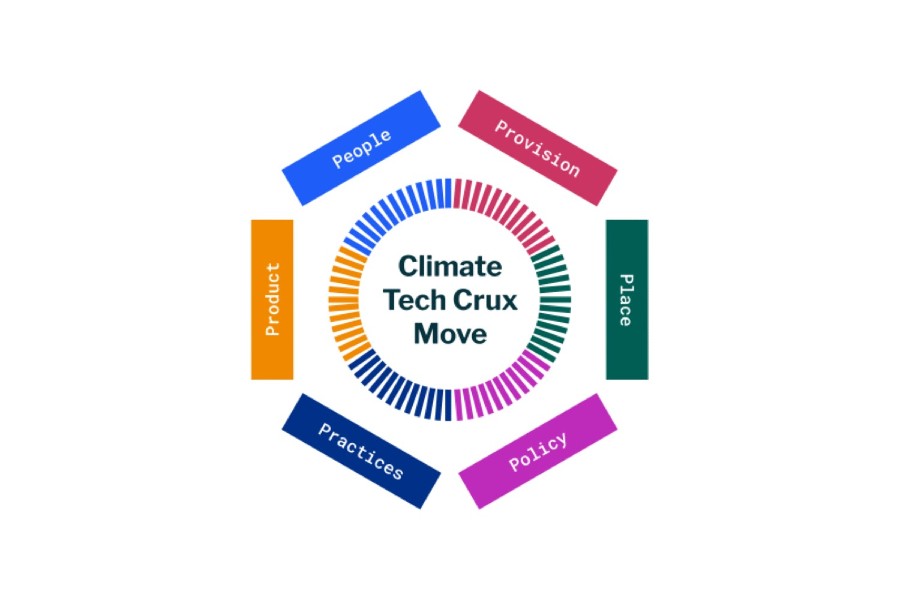This blog is the result of a meeting of minds and a shared frustration around climate stasis despite knowing better. This frustration has been brewing since November 2021.
Conference of the parties (COP26) in Glasgow was in full swing when we met. The buzz, energy, passion, and enthusiasm to tackle the climate crisis was palpable. And frankly, so was the exasperation. The need to accelerate action was so obvious, as it has been for so long now.
The conference was wall-to-wall with solutions, financiers, corporates, start-ups, n on-governmental organisations, academics, journalists. With all this desire, innovation, and resource, why did things seem to move so – if you’ll excuse the use of the word – glacially?!
It has been over a year since that meeting. The one that John Kerry, the US special presidential envoy on the climate crisis, described as the “last best hope for the world to get its act together.” Looking back, we can see exactly what we feared: all the goodwill, talent and tech didn’t really change much, did it?
It’s time to really consider why this is the case. Let us take stock.
A climate tipping point
We have reached a climate tipping point, in the non-climate science sense. Where we are beyond the search for the technical and financial means required to reach net zero. Or at least, this is the hypothesis that we believe to be true: we have both the technical knowhow and financial resources to solve the climate crisis and reach net zero emissions.
Let us put it another way. The reasons why we are doing a very bad job of tackling the climate crisis are not because of a lack of technology. Or because we can not ‘afford’ it. Or because we do not want to. These things are all there – finally. The barriers relate to other factors that need to be tackled if a new solution is going to scale out.
As innovators we had a meeting of minds when it came to characterising what we saw as fundamental systemic problems leading to climate stasis, preventing meaningful change from taking hold. Which particularly applies to innovation and the scale out of solutions needed to reduce carbon emissions. We called this characterisation – the Climate Tech Crux Move.

Credit: peepo, E+ via Getty Images
Finding the crux
In climbing ‘the crux move’ refers to the most difficult move or series of moves on a climb. Climbs are rated based on the crux, not their average difficulty. You might cruise easily up half a climb but find yourself unable to make it past the crux move.
If you’re not a word nerd, skip to the next paragraph. If you are a word nerd you might enjoy learning that the first term dates from the late 1800s, the variant from the early 1500s. You’ll recognise the idea of ‘crux’ from phrases like, getting to the ‘crux of the matter.’ Crux is Latin for ‘cross,’ in English it means ‘difficulty’ or ‘puzzle,’ and it is from the latter that this expression is thought to be derived. The variant employs the heart in the sense of ‘a vital part’ (as it is in the body). This is the same as getting to ‘the crux of the matter.’
Every innovation project or goal has a crux move or two. These are the vital moments in the thinking, or process, where things are just hard. Progress grinds to a halt and fundamental changes or pivots are needed to make the next step on the journey. Often, we find these crux moves are in the less visible elements of what we are trying to do. Ask anyone who has been part of a big tech implementation for instance, and they will tell you the people make it hard, not the tech.
We find the ‘crux’ a useful analogy to describe these ‘other’ factors that need to be addressed to accelerate the scale out of climate tech.
The problem is not the tech
If you are in any way involved in technology or innovation you can probably guess the types of things we are talking about as cruxes. And the crux is likely to be unique, at least to a given sector or group of technologies. How many times have you sat in a workshop, and someone has said, ‘well the problem is regulation’! Or ‘it’s just too expensive’! The latter point almost always being from an incumbent point of view that is myopic to new and different ways of creating value.
The following diagram shows some of how we might look at things from a more holistic perspective. While, as a sector, we tend to pay a lot of attention to products. This more holistic view keeps those products in perspective by depicting it as one of six elements that need to come together to make change happen and stick.
Climate Tech Crux Move

Credit: Brink
Provision: investments and funding are developed to support meaningful technology transfer, capacity building and scaling, for example, access to commercialisation strategies.
Place: solutions are created that are fit for purpose given contextual factors.
Policy: policies are developed that incentivise innovation, for example, de-risking private sector investment and tax breaks for implementers.
Practices: new practices are created and transferred into industry connected across sectors and solutions, for example, skills or manufacturing development programmes.
Products: proven existing products are nurtured so that they can be scaled; research and development (R&D) is nurtured to unlock new technologies.
People: technical expertise is combined with real-world experience when designing products that have proven market and demonstrated desirability.
You get the picture. The point is one of these things alone can move the dial in the way we need to move the dial. They need to be looked at holistically. And in the great scheme of things, making something work, technically, is kind of the easy bit.
Example of a crux move
It is now widely accepted that renewables, especially wind and solar, are the cheapest forms of energy. Rooftop solar has been around for decades. Yet market penetration is still depressingly low, and people are currently paying a lot more per kilowatt hour of energy from the grid than the cost of rooftop solar. So why is it that so few south facing roofs in the country have solar? What is the crux?
One problem, as is the case with most renewables, is while solar is cheaper in the long run, there is a big up-front cost. And in general, most people do not have a lot of capital. Effectively there needs to be a mechanism to swap the cashflow consumers pay to their energy companies to finance the capital expenditure cost of installing solar. In essence we need a new business model. Can the government subsidise this up-front cost with, for example, an advance market commitment on behalf of consumers?
It seems so obvious, but it is an under-served opportunity. This is why one of our favourite examples of a crux move is Sunrun in the US. Sunrun, seeing the gap, rolled out a solar-as-a-service business model. Becoming one of the biggest installers of domestic solar in the US and building a business worth several billion dollars in the process. Not bad!
What about unleashing the promising R&D projects that are sitting inside academic institution shelves, gathering digital dust? What is the crux for commercialising these ideas and solutions? Do we need to step up the game on registering patents to incentivise implementation in academia and make sure they are fairly remunerated for their work? Do we need a brokering service to matchmake entrepreneurs with scientists in R&D units?
Innovating the innovators

Credit: kelvn, iStock, Getty Images Plus via Getty Images
As innovators we recognise there’s an inherent irony in that some of the things we do are not that innovative. If we want people to think more holistically in how they develop and scale out solutions, then we probably need to think about more than managing grant programmes. How do we help people find their cruxes? What are the innovation crux moves that can make the necessary leaps of progress needed? Here are some of our ideas:
- Set up a Climate Tech Crux Fund to test crux moves and make the invisible visible. Invest in a portfolio of innovative approaches to get good ideas off the page or beyond pilot to scale. For example, business models, tax reforms, commercialisation approaches and professional networks.
- Accept that not any point solution alone will move the dial enough and bring them together and test technology ideas and their business models, at once. Create living labs that treat the system as the unit of innovation and test policy changes, technologies, and business models together. For instance, focusing on one place try the south facing solar roof idea (policy). With the aim of testing how much difference solar panels (product) with an advance market commitment (provision) make in combination.
- Bring together a CoLab of people to work collaboratively (co) and experimentally (lab) towards a shared vision. We need the tech people, finance people and those with real world experiences of where we are working to pull together. Surfacing implementation issues before they happen and spotting needs on the ground.
It strikes us that much of what is required to make this happen is a focus on capabilities that seem easy at first. Then fly in the face of how ‘things are done around here.’ Making them much harder to do in practice. Those capabilities are cross sector collaboration, working together, pooling resources, finding alignment between uncommon bedfellows like entrepreneurs and policymakers, and probably more besides.
This is the invisible crux. The move that demands more sophistication from us than neat, linear grant programmes that seek to demonstrate impact with one shiny bit of tech that magically unlocks unicorn-level scale.
We need more cruxes
This decade is often referred to as ‘the decade of climate action.’ To be frank, it has started pretty slowly. So, let us get to the crux of it! Over the next few weeks, we would like to invite readers to contribute to this thinking by sharing their thoughts.
What Climate Tech crux moves are needed to break the climate change stalemate we find ourselves in? We will publish findings in March 2023.
If you would like to take part fill in our survey.
Further information
Connect with Stafford on LinkedIn
Connect with Brink on LinkedIn
Connect with Innovate UK on LinkedIn
Follow Innovate UK on Facebook
Go to the new Innovate UK website






